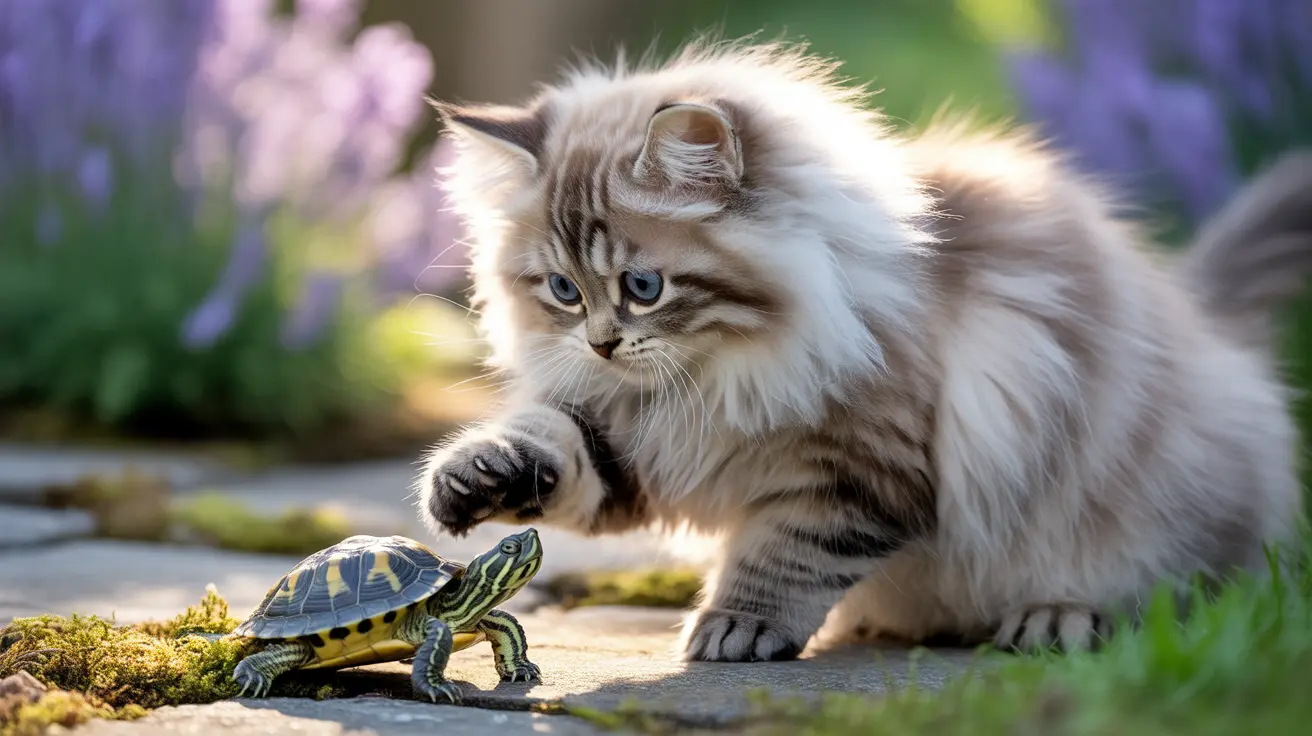Understanding Cat Predatory Behavior
While cats are natural predators with strong hunting instincts, the relationship between cats and turtles is more complex than you might think. Domestic cats rarely view turtles as potential prey, though their curious nature might lead to investigative interactions.
Most well-fed house cats show limited interest in turtles beyond occasional playful curiosity. However, understanding this dynamic is crucial for pet owners who have both species or live in areas with wild turtles.
Natural Interactions Between Cats and Turtles
In the wild, encounters between cats and turtles typically result in brief investigations rather than predation. Adult turtles' hard shells serve as excellent defense mechanisms, making them challenging and unappealing targets for most cats.
However, there are important exceptions to consider. Wild or feral cats may be more likely to attempt hunting turtles, especially when food is scarce. Baby turtles and hatchlings are particularly vulnerable due to their smaller size and softer shells.
Risks and Safety Concerns
Threats to Young Turtles
Baby turtles face the highest risk from cat encounters. Their softer shells and smaller size make them more susceptible to injury from curious paws or predatory behavior. Even playful interactions can result in serious harm to young turtles.
Adult Turtle Protection
Adult turtles with fully developed shells generally face minimal risk from domestic cats. Their hard shells provide excellent protection, and most cats quickly learn that these slow-moving creatures aren't worth the effort to hunt.
Managing Cats and Turtles in Home Environments
For households with both cats and pet turtles, proper management is essential. Secure enclosures with tight-fitting lids prevent unwanted access, while supervised interactions help both animals adjust to each other's presence safely.
Creating separate spaces and establishing boundaries early on can lead to peaceful coexistence. Many pet owners report their cats eventually becoming indifferent to their shelled housemates.
Wild and Outdoor Considerations
Outdoor settings present unique challenges. Gardens with ponds or areas where wild turtles nest may need protection from neighborhood cats. Simple deterrents or physical barriers can help protect vulnerable turtle populations.
Frequently Asked Questions
Can domestic cats eat turtles, or are they more likely to just play with them?
Domestic cats rarely eat turtles and are more likely to engage in playful behavior or simple observation. Well-fed house cats typically show little interest in turtles as prey.
Are baby turtles at greater risk from cats than adult turtles with hard shells?
Yes, baby turtles are significantly more vulnerable to cats due to their softer shells and smaller size. Adult turtles with fully developed shells face minimal risk from domestic cats.
How can I safely introduce my cat to a pet turtle to avoid injuries?
Introduce them gradually under close supervision. Keep the turtle in its secure enclosure initially, allowing the cat to observe from a safe distance. Never leave them unsupervised during early interactions.
Do cats pose a threat to turtle eggs, and how can I protect turtle nests from them?
While domestic cats rarely seek out turtle eggs, wild and feral cats may disturb nests. Protect outdoor turtle nests with protective covers or barriers to prevent access.
What are the best ways to prevent my cat from harming my turtle at home?
Use secure, cat-proof enclosures with tight-fitting lids, supervise all interactions, and keep the turtle habitat in a separate room if necessary. Ensure the cat has plenty of enrichment activities to prevent boredom-driven investigation.
Conclusion
While cats may show interest in turtles, actual predation is rare among domestic cats. The key to successful cohabitation lies in proper management, supervision, and understanding each animal's natural behaviors. With appropriate precautions, cats and turtles can safely share a home environment.






